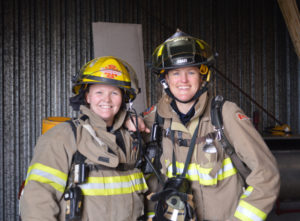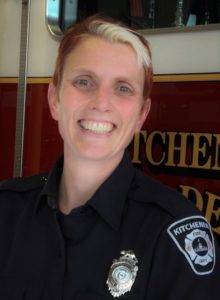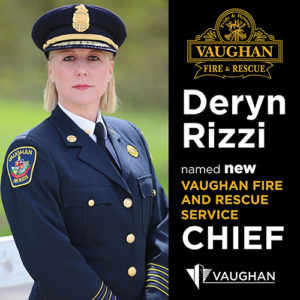By: Robert Avsec, Executive Fire Officer
What is the role of scholarship in any profession? My research for this piece found this excellent definition for  scholarship and its application to the nursing profession.
scholarship and its application to the nursing profession.
Scholarship in nursing can be defined as those activities that systematically advance the teaching, research, and practice of nursing through rigorous inquiry that [1]:
- Is significant to the profession
- Is creative
- Can be documented
- Can be replicated or elaborated upon; and
- Can be peer-reviewed through various methods.
I believe that one could very easily replace nursing with fire and emergency services in that definition, no?
Yes, particularly if you’re familiar at all with the Executive Fire Officer Program (EFOP) at the National Fire Academy (NFA). One of the cornerstones of that highly successful program for fire service leadership development is the requirement for the student to engage in applied research following each course they complete during their four year participation in the program.
Another cornerstone of the program is that almost 10,000 of those Applied Research Projects (ARP) completed by EFOP students are stored at the National Emergency Training Center’s Library in a searchable on-line catalog. Over 1300 of those ARPs that received a grade of 4.0 out of 4 (The best of the best) can be found in the EFO Program 4.0 Collection.
(As a 2001 EFOP graduate I’m honored to have my 2nd year ARP, Analysis of the change readiness of Chesterfield Fire Department officers, included in that special 4.0 collection).
Recently, one of my fire service colleagues, Lydia Wilcox, a firefighter with the City of Kitchener (Ontario) Fire Department, contacted me to share her own contribution to scholarship in fire and emergency services.
Firefighter Wilcox is finishing up her course work to earn a Masters of Public Administration degree from the

Firefighter and master’s degree candidate, Lydia Wilcox.
University of Western Ontario and for her research requirement she chose to explore for possible barriers that women encounter when pursuing a career as an operational firefighter in the province of Ontario. Here’s the abstract from her completed paper.
Abstract
This paper examines the steps individuals must undertake when pursuing a career as an operational firefighter in Ontario. The steps are neutral facing, meaning all candidates regardless of their demographic position must complete and be successful in order to receive a job offer from a municipal fire department. For candidates, this includes the same prequalification physical testing as well a meeting prescribed screening and selection criteria to be considered as a potential candidate.
The aim of this paper is to explore the potential barriers women face during candidate testing, as well as during the screening, selection and hiring process when applying to a municipal fire service as an operational firefighter.
Chapter 2 explores the scientific establishment of physical abilities testing in Canada, a requirement for firefighters and how bona fide occupational requirements (BFORs) are established to discriminate between who and who cannot perform to the physical standards of the job. While these tests appear to be neutral facing, requiring each candidate to complete the same physical tests, this paper explores how the tests may be a barrier to women.
In addition, Chapter 2 discusses where bias may enter the screening and selection of candidates and how the use of human resources best practices may mitigate gender stereotyping. An examination of bias may provide insight into the causes of adverse impact on the number of women being hired. Adverse impact occurs when the selection rate for a protected group, in this case women, is lower than that of a relevant comparison group such as men (Catano, Wiesner, & Hackett, 2016).
Chapter 3 discusses the methodology applied to this paper. Primary research through an anonymous survey was

Chief Rizzi was promoted to her position as Fire Chief on June 1, 2018. Photo Source: https://www.vaughan.ca/news/Pages/Deryn-Rizzi-named-new-Vaughan-Fire-and-Rescue-Service-Chief.aspx
used to explore how human resource departments and municipal fire services in Ontario work together to conduct screening and selection of firefighter candidates. The survey also included an exploration of the use of programs to target the hiring of women in municipal fire services.
Chapter 4 looks at how physical testing used in Ontario has been established, using scientific best practices to measure performance standards of firefighting candidates. The limitations when establishing this testing will be discussed as well as how agencies developing the tests can lessen the adverse impact or barriers these tests create for women. Additionally, Chapter 4 will review primary research on the hiring practices of Ontario fire services in the screening and selection of operational firefighters.
Chapter 5 will close the paper with a discussion and concluding remarks surrounding barriers women are faced with when entering a career as an operational firefighter in the province of Ontario. The discussion will focus on the concept of systemic discrimination as defined by Agòcs (2004, p.2) “… it consists of patterns of behaviour that are part of the social and administrative structures of the workplace, and that create or perpetuate a position of relative disadvantage for some groups and privilege for others.
Systemic discrimination is multidimensional and may entail separate and cumulative impacts on grounds of race, gender, disability and other identities” (Agocs, 2004, p. 2). Finally, this paper will demonstrate the compounding effects of the barriers women face when pursuing a career as an operational firefighter in Ontario.
Download the entire paper (122 pages) in PDF file format here.
References
1. American Association of Colleges of Nursing. Defining Scholarship for the Discipline of Nursing. Retrieved From: http://www.aacnnursing.org/News-Information/Position-Statements-White-Papers/Defining-Scholarship
 Fire & EMS Leader Pro The job of old firefighters is to teach young firefighters how to become old firefighters!
Fire & EMS Leader Pro The job of old firefighters is to teach young firefighters how to become old firefighters!